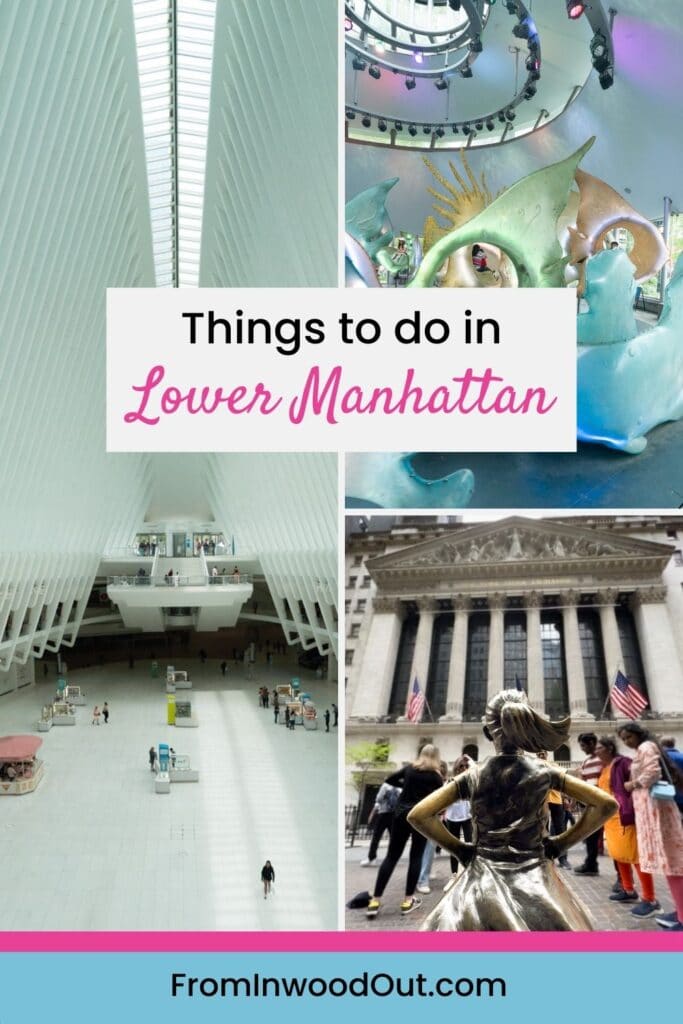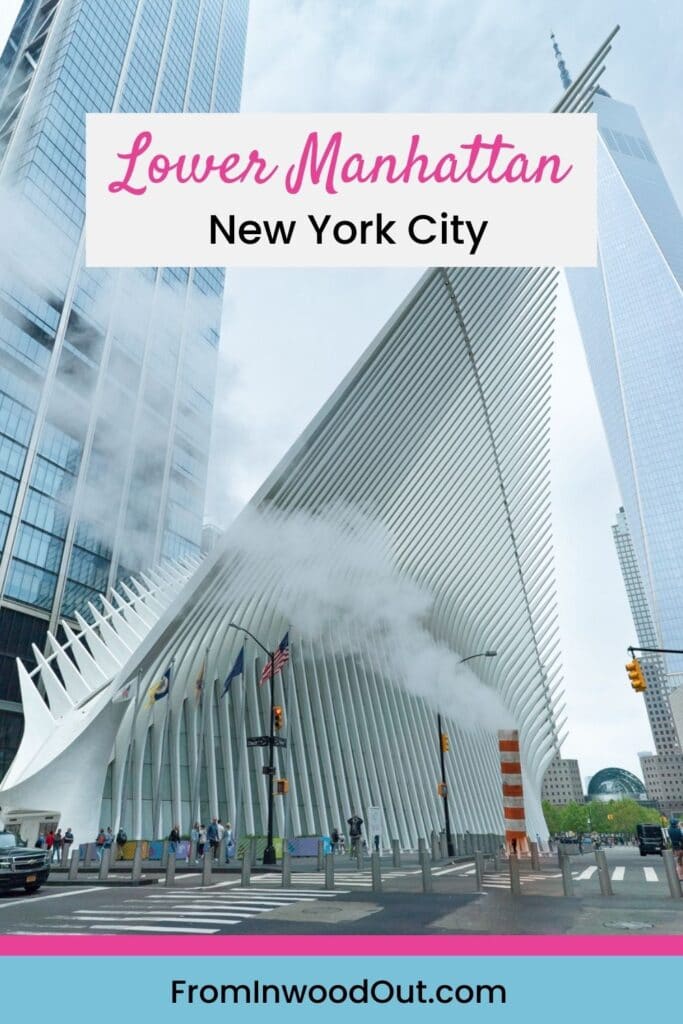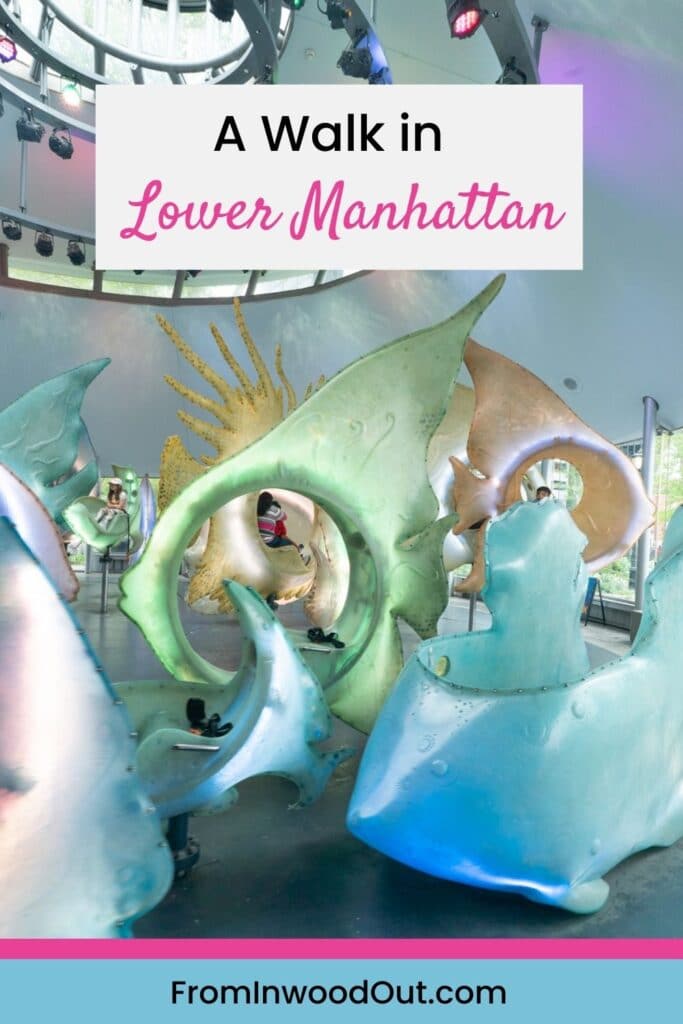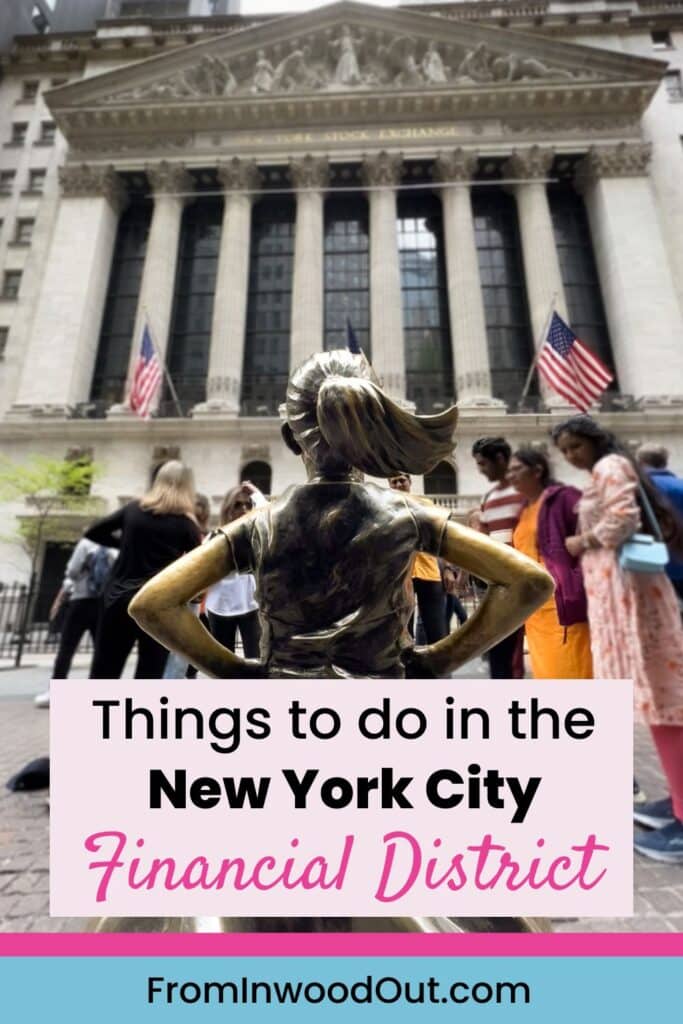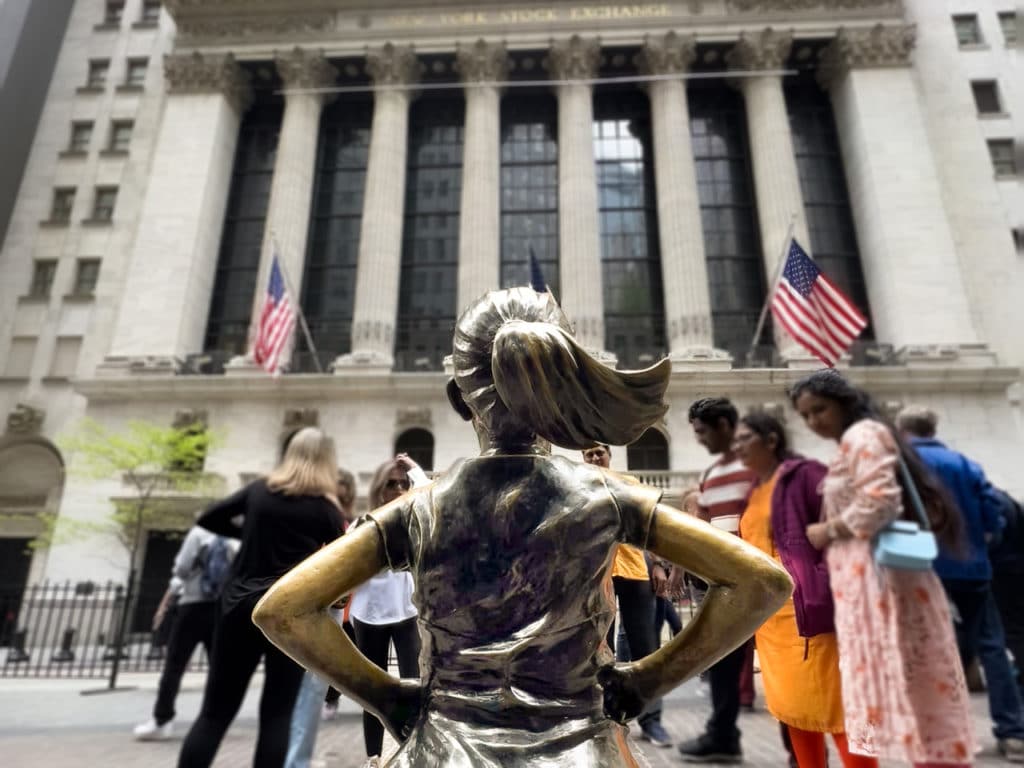
There’s no lack of intriguing things to do in Lower Manhattan and since many of the attractions are close together in this part of town, you can see quite a lot of them on a mile-long walk from Brooklyn Bridge to The Battery.
This part of Lower Manhattan encompasses the Financial District and all the iconic sites to see there. It’s also where the developed city of New York came into being, which you’ll find evidence of in the narrow cobblestone streets, the 17th century gravestones, and the tavern where George Washington hung out.
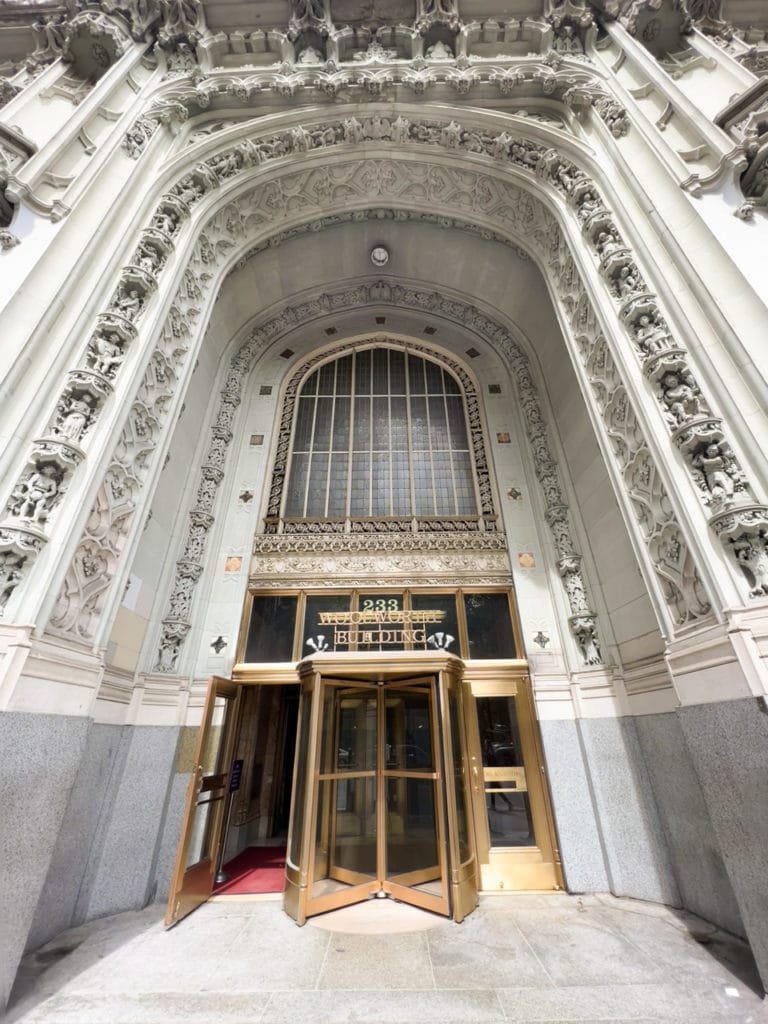
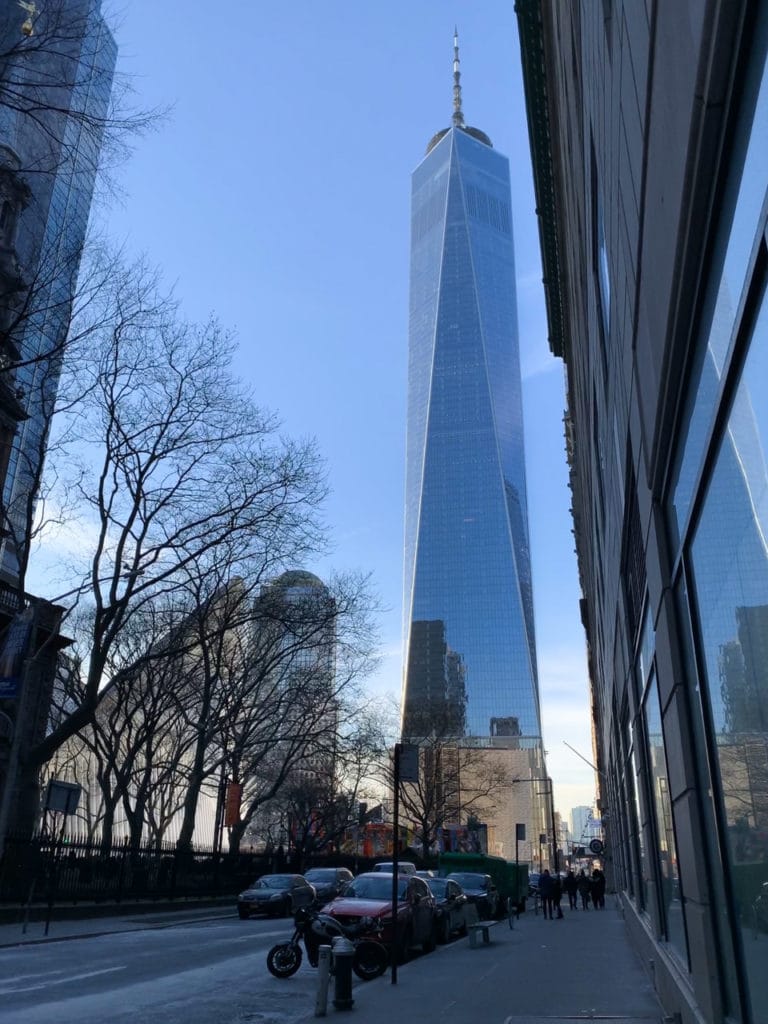
That history is in stark contrast with the modern structures built to replace the fallen buildings of the World Trade Center, but both the past and present come together to create a more vivid picture of New York City history.
This self-guided walking tour of Lower Manhattan pairs well with a visit to the Brooklyn Bridge. If you’ve walked across the bridge from Brooklyn to Manhattan, you’ll find yourself in City Hall Park, the perfect launching point for this walking itinerary.
City Hall Park
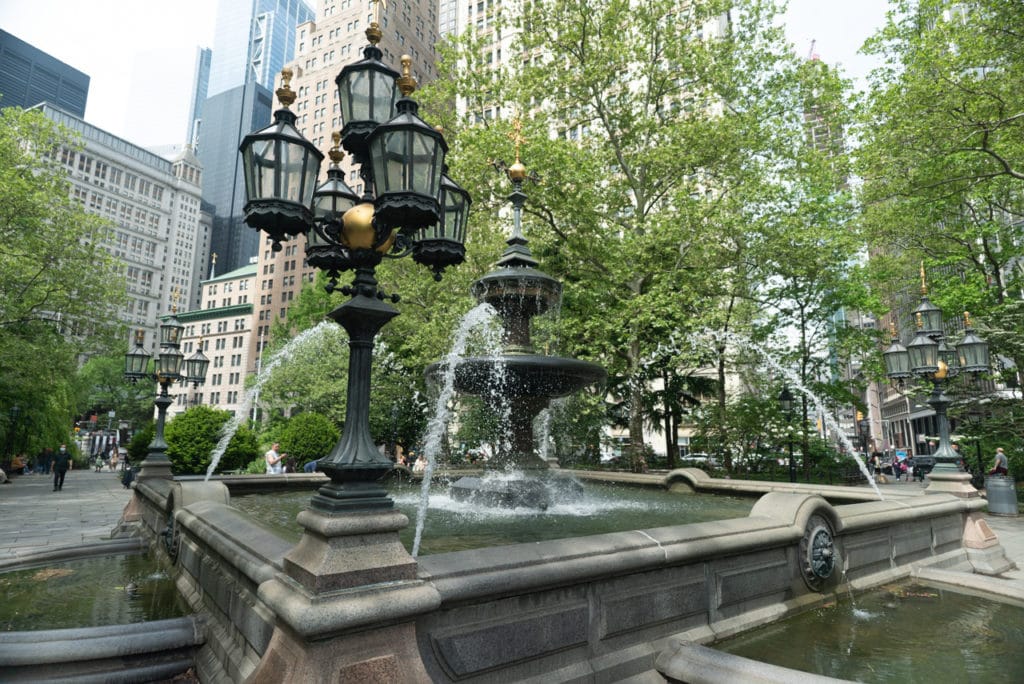
In City Hall Park, you’re standing on land that was once part of a Native American Trail and then a 17th century pasture for livestock. A debtors’ prison was built in 1757 and later used to hold prisoners during the American Revolution.
The best thing to do in City Hall Park is to just wander around, taking in city life. Look around at the old government buildings surrounding the park, see workers come out of their offices for lunch, and join the throngs of visitors who are taking it all in, too. A good place to exit City Hall Park and continue on your way is at Park Place and Broadway, near the Jacob Wrey Mould Fountain (pictured above). At this point, be sure to look up at the iconic Woolworth Building (pictured above) before moving on.
Canyon of Heroes
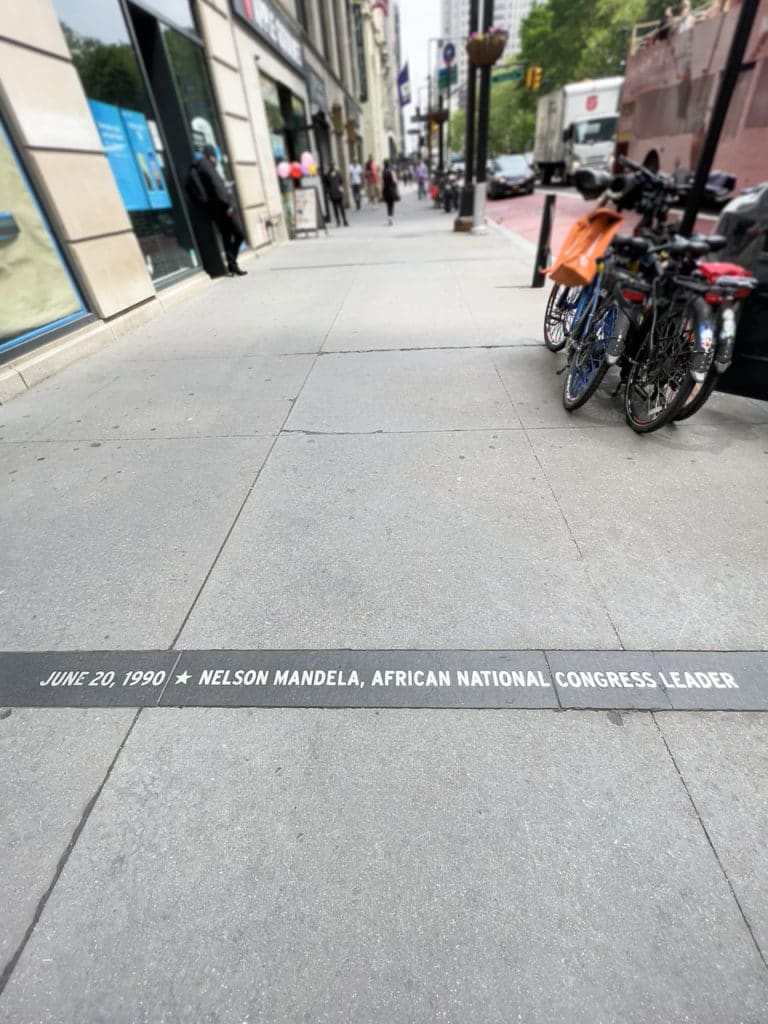
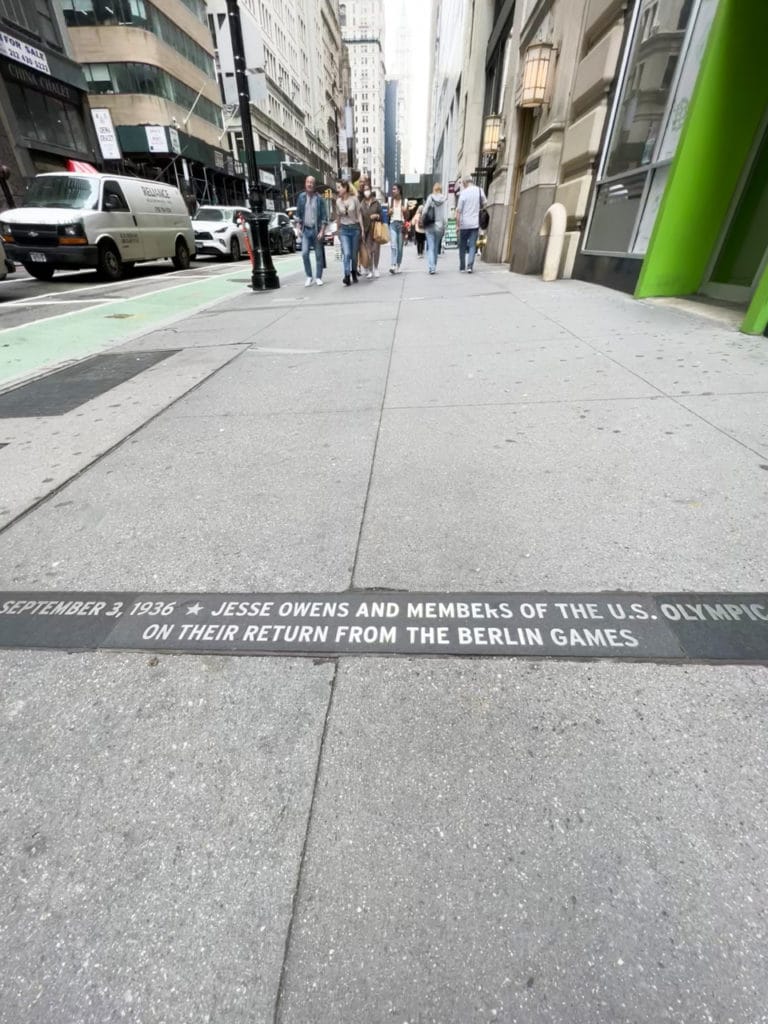
If there were a theme for this self-guided walking tour, it would be “Look up, look down.”
First, look up at the skyline often. You’ll catch frequent views of that stunning skyscraper, One World Trade. But don’t forget to look down, where a lot of New York City’s history is recorded, literally, in the Canyon of Heroes, made up of the frequent sidewalk plaques you’ll see along Broadway.
These plaques typically include the name of a well-known politician, athlete, or team, along with a date. They represent each time a ticker tape parade was held in Lower Manhattan in honor of that person or team. There are around 200 plaques in total, embedded in the sidewalks along Broadway, from City Hall to The Battery. The sidewalk plaques in the Canyon of Heroes follow the same route as the ticker tape parades.
St. Paul’s Chapel
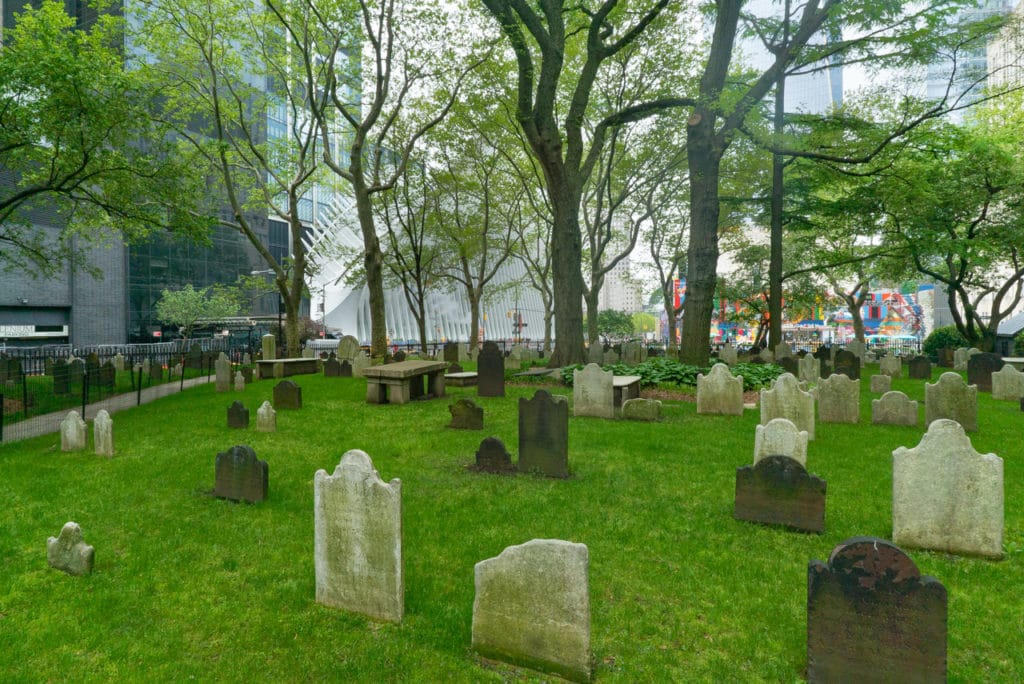
Here’s one for U.S. history buffs.
Built in 1766, St. Paul’s Chapel is Manhattan’s oldest public building in continuous use. Some churchyard gravestones are so old that the engraved lettering has faded to illegibility or disappeared completely.
St. Paul’s Chapel belongs to the Trinity Church of Wall Street parish (see below) and is especially notable for withstanding two tragic events. The first was the Great Fire of 1776, which destroyed much of Manhattan, including Trinity Church. St. Paul’s was saved thanks to a local bucket brigade. People who normally went to Trinity Church moved to St. Paul’s. This includes George Washington, who went to a service at St. Paul’s on April 30, 1789, after he was sworn in as the first president of the United States.
The second tragedy occurred more than two centuries later, when the collapse of the Twin Towers and surrounding buildings devastated Lower Manhattan. St. Paul’s once again remained standing and became a relief center where rescue and recovery workers could eat, rest, and regroup. These dual tragedies centuries apart make St. Paul’s, in my opinion, one of the most fascinating Lower Manhattan attractions.
Visitors are welcome in both the chapel and the churchyard. In the churchyard, look for two notable monuments: the grave of Brigadier General Richard Montgomery, first officer killed in the American Revolution, and the Bell of Hope, which is rung every year on September 11th.
St. Paul’s Chapel and Churchyard are open to the public daily from 8:30 a.m.-6 p.m.
209 Broadway, New York NY
The Oculus
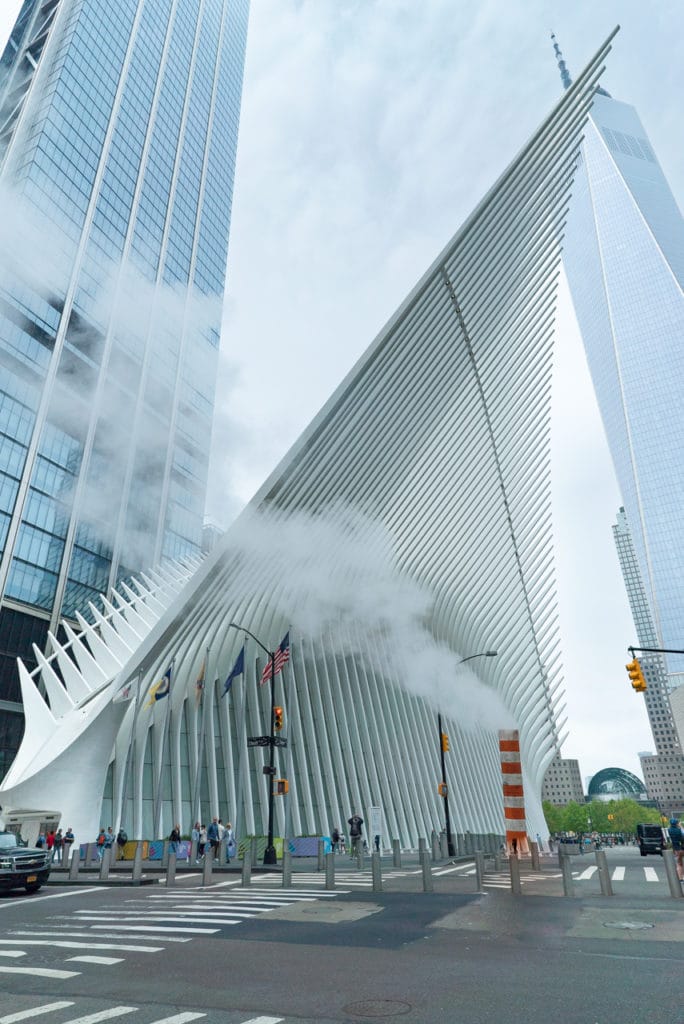
While you’re roaming around the 18th century graves in St. Paul’s Churchyard, you can’t miss the stark white bird-like building in the background. The modernity of the Oculus is so at odds with the chipped and faded gravestones of St. Paul’s and—if you’re like me—that contrast will pull you to the Oculus as your next stop.
On September 11, all seven buildings of the World Trade Center were destroyed. The Oculus, which is meant to resemble a dove spreading its wings, was built to bring hope and light to the darkness of Lower Manhattan. It was designed as a shopping mall and transportation hub to draw business and people back to this once-thriving part of the city.
Since the Oculus opened on March 4, 2016, it seems like that mission has been accomplished. Stores like Apple, Cole Haan, and H&M are always busy. There are lots of places to dine, from Shake Shack to Pret A Manger to that mall staple, Auntie Anne’s Pretzels. A branch of Eataly is also here, where you can shop for Italian specialty items and sit down to Napoli-style pizza, Tuscan cuisine, and more at their selection of restaurants.

If you’re not in the mood to shop or eat, at least get a closer look inside the Oculus, which has photo ops you won’t want to miss. While the wings outside the building soar 350 feet toward the sky, the Oculus on the inside is spacious and full of light. Once inside, be sure to look all the way up at the window on the ceiling, where One World Trade is visible.
Shops and Dining at the Oculus: Monday-Saturday 10 a.m.-7 p.m. Sunday 11 a.m.-6 p.m.
50 Church Street, New York, NY
One World Observatory
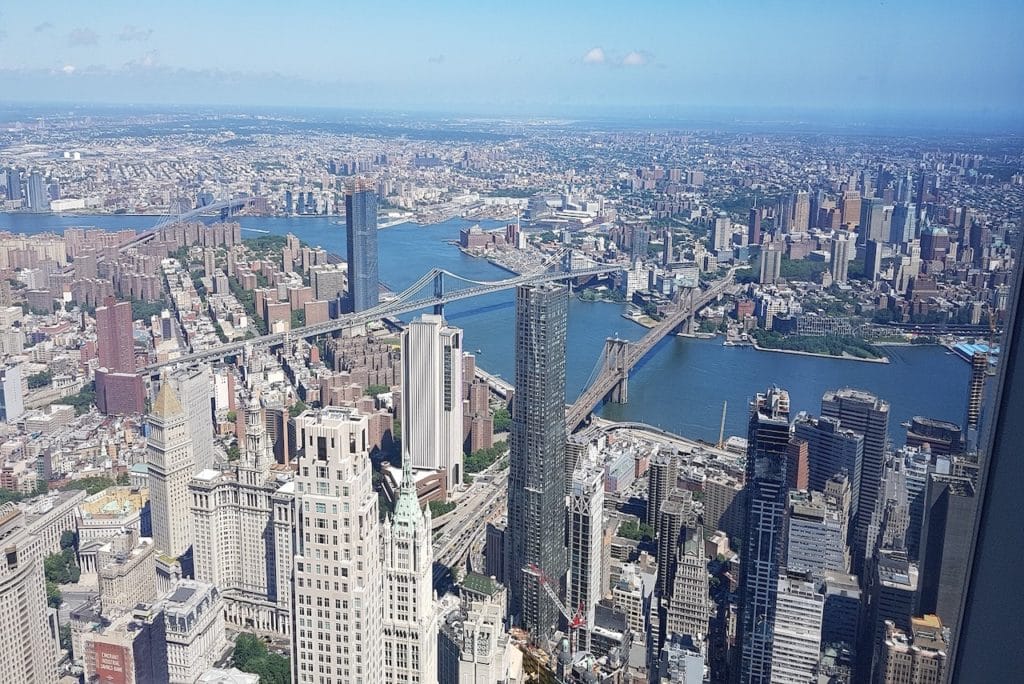
One World Trade Center, of course, is synonymous with Lower Manhattan and a must-see attraction in New York City. Reaching 1,776 feet into the sky (including the spire), the skyscraper is the tallest building in the northern hemisphere and sits on the site where World Trade Center Building 6 fell on September 11th. The main attraction is One World Observatory, where visitors are whisked up on an ear-popping elevator ride, where 360-degree views from the 100-102nd floors await. Getting a sky-high view of Lower Manhattan is a great way to orient yourself to the neighborhood before you embark on your self-guided walking tour of Lower Manhattan.
Check website for the most up-to-date operating hours.
117 West Street, New York, NY
Trinity Church Wall Street
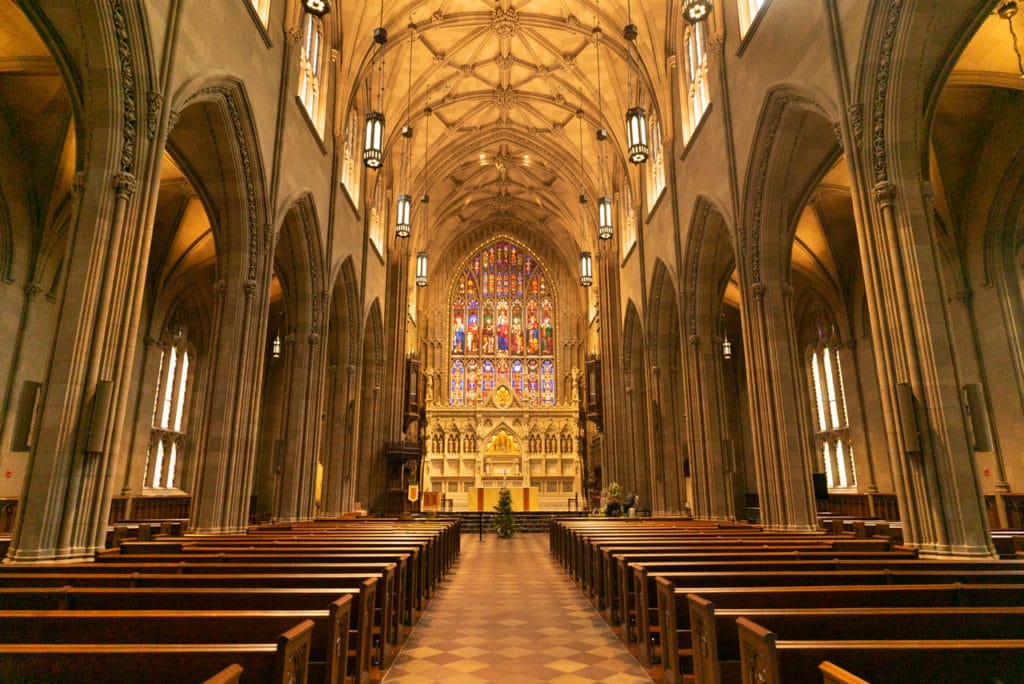
Three churches have sat on the land where Trinity Church Wall Street is now. The first was built in 1698 but then, along with 10-25% of Manhattan’s buildings, was destroyed in the Great Fire of 1776. The church was rebuilt in 1790 and stood for about 50 years before a heavy snowfall led to the roof collapsing. The church you see today was rebuilt in 1846 and at the time, the 281-foot spire made it the tallest building in New York City.
Like at St. Paul’s, which is part of Trinity Church’s parish, wandering around the cemetery here is to take a step back in time. The churchyard’s oldest grave belongs to five-year-old Richard Churcher, whose gravestone marks 1681 as his year of death.
There’s also a soldier’s monument, dedicated to American soldiers who died in the Revolutionary War, though the most notable monument is Alexander Hamilton‘s grave. He famously died in 1804 after a duel with Aaron Burr. Hamilton’s cone-shaped grave is located on the south side of the cemetery (along Rector Street), alongside his wife Eliza’s grave and a marker for their son Philip, who also died in a duel at the age of 19, though it is unknown exactly where in the cemetery he was buried (George Eacker, who delivered the fatal shot to Philip, is buried at St. Paul’s Chapel).
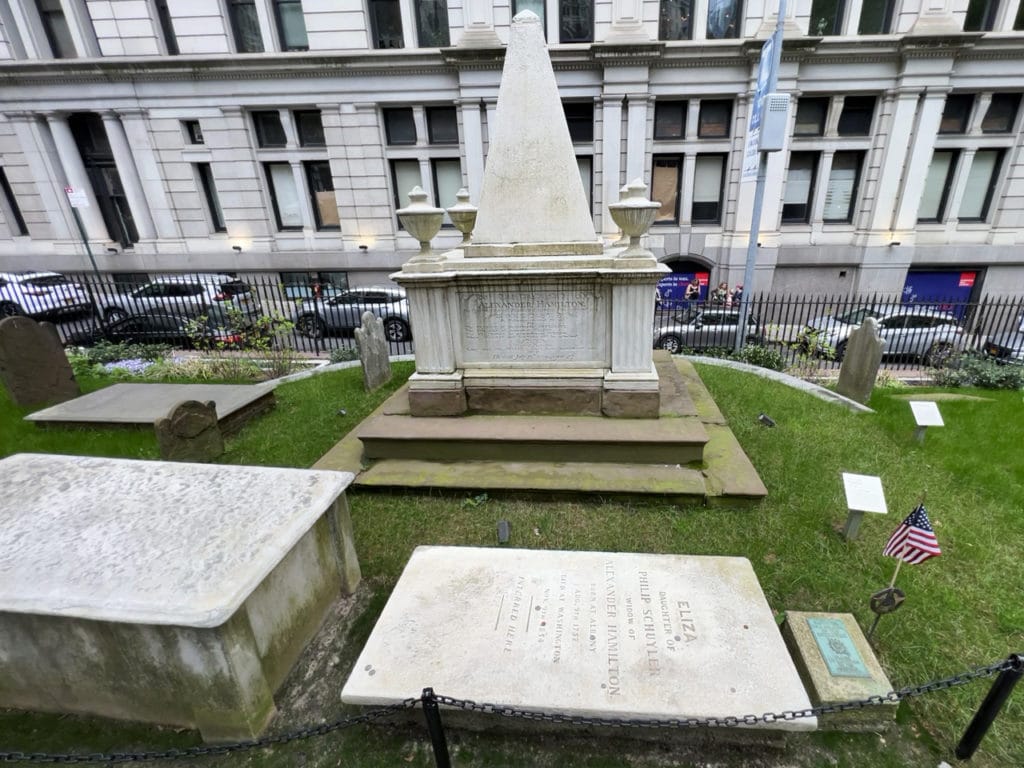
For those interested in historical cemeteries, visit Trinity Church’s third location, Trinity Church Uptown. Located in Hamilton Heights in Upper Manhattan, Trinity Church Uptown is the final resting place for many notable New Yorkers, such as actor Jerry Orbach (d. 2004), Central Park architect Calvert Vaux (d. 1895), author Ralph Ellison (d. 1994), and several members of the Astor family include John J. Astor, the country’s first multi-millionaire (d. 1848). Eliza Jumel, the 18th century millionaire and the longest resident of Morris-Jumel Mansion, is also buried here.
Trinity Church Wall Street is open daily from 8:30 a.m. to 6 p.m.
89 Broadway, New York, NY
New York Stock Exchange & Fearless Girl Statue
A list of things to do in the Financial District is not complete unless it includes the headquarters of the world’s largest stock exchange. The 10-story New York Stock Exchange Building was designed by architect George Post and built in 1903 in the Classic Revival Style. For safety reasons, the National Historic Landmark hasn’t been open for tours since September 11, so the public no longer gets to see the interior’s smooth marble walls leading up to four-story-high gilded ceilings, and huge arched windows that let the sunlight stream in. However, the classic exterior of the building is still a must-see.
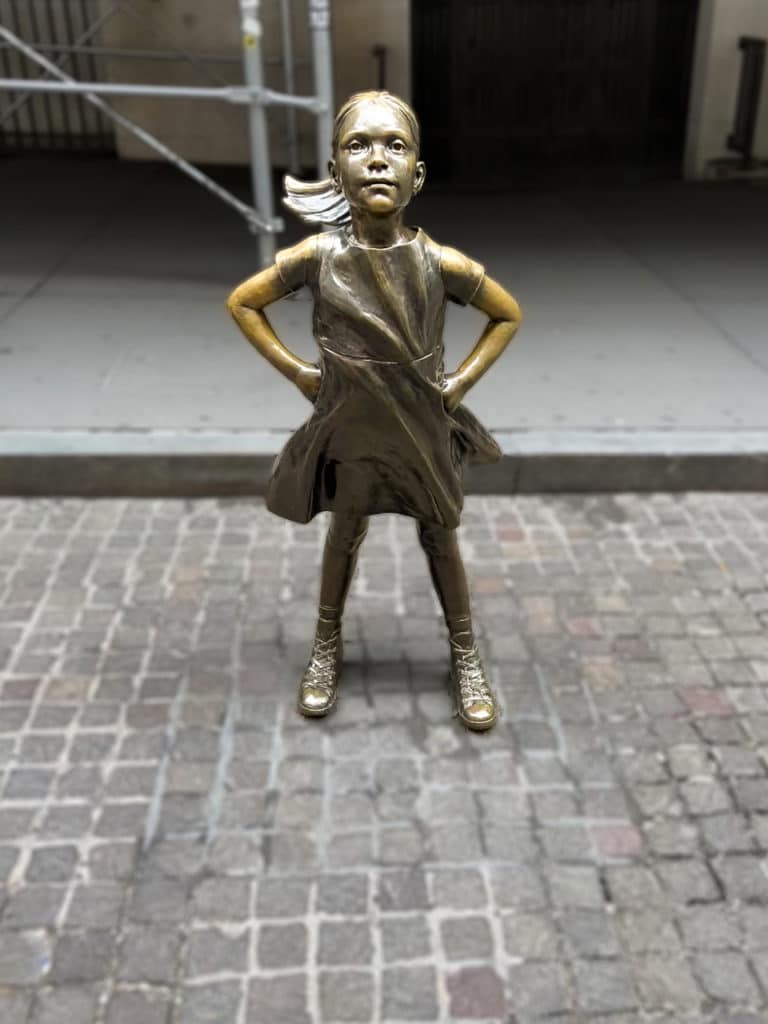
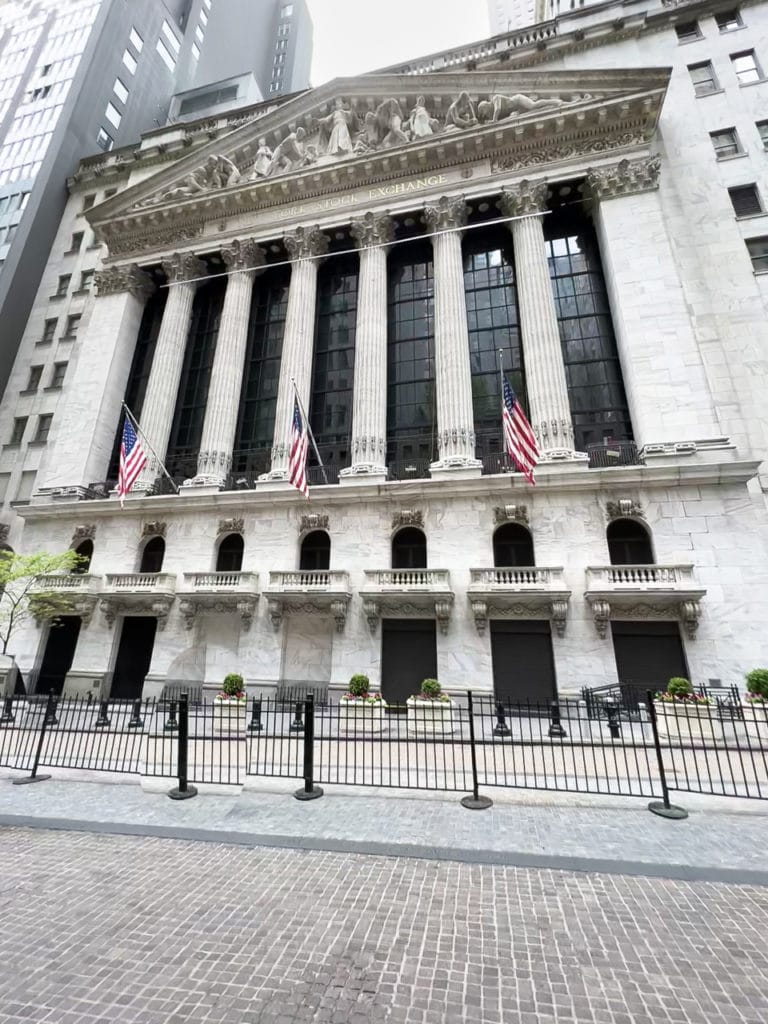
You’ll also find the Fearless Girl statue here. The artwork featuring the image of a young girl, hands on hips and ready to take on the world, was created by artist Kristen Visbal. Originally commissioned by an ad agency to raise awareness of the inequality of women in the workplace, the bronze 50-inch-high (127 cm) statue soon took on a personality of its own when it was installed in Lower Manhattan just ahead of International Women’s Day in 2017. While the fervor of Instagram images of women mimicking her pose seems to have died down, the statue remains a popular attraction.
18 Broad Street between Wall Street and Exchange Place
Charging Bull of Wall Street
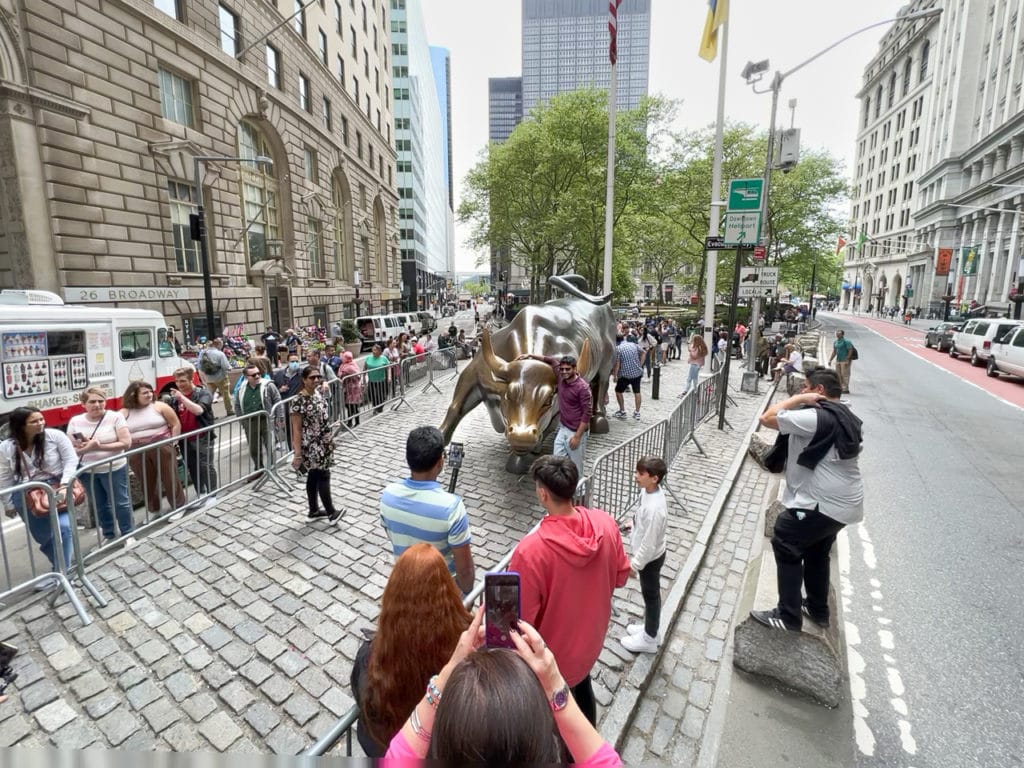
As much as the New York Stock Exchange, the Charging Bull of Wall Street is deeply representational of New York City’s Financial District. And definitely as popular.
Hang out in its vicinity on any given day and you’ll see crowds lined up, waiting to get a photo free of people (not likely!). Vendors surround the bull, selling little replicas of its signature stance and flared nostrils. Rubbing certain anatomical parts has become popular. One look at the bull’s testicles, shinier from the millions of hands, will tell you that’s where he’s touched the most.
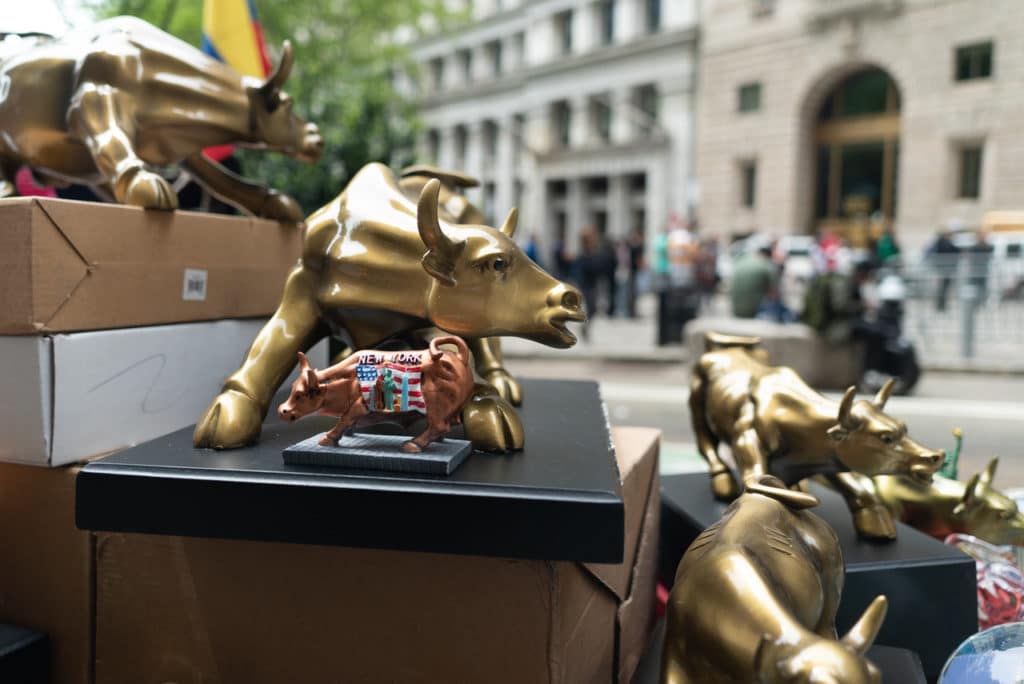
Created by Italian artist Arturo Di Modica, The Charging Bull of Wall Street weighs in at 7,000 pounds and stands 11 feet tall and 16 feet in length. In an act of guerilla art, the bull was unloaded under the New York Stock Exchange Christmas tree in December 1989. The NYPD initially removed the unsanctioned installation, then relocated it to its current home just north of Bowling Green and has been a fixture in the Financial District ever since.
Di Modica intention when he installed the statue was as a gift to the city of New York, to represent economic resilience after the stock market crash in 1987. The bull’s aggressive stance represents prosperity. Many also believe a rub of his horns will bring good luck, while the testicles symbolize virility.
Broadway and Whitehall Street, north of Bowling Green
The Battery
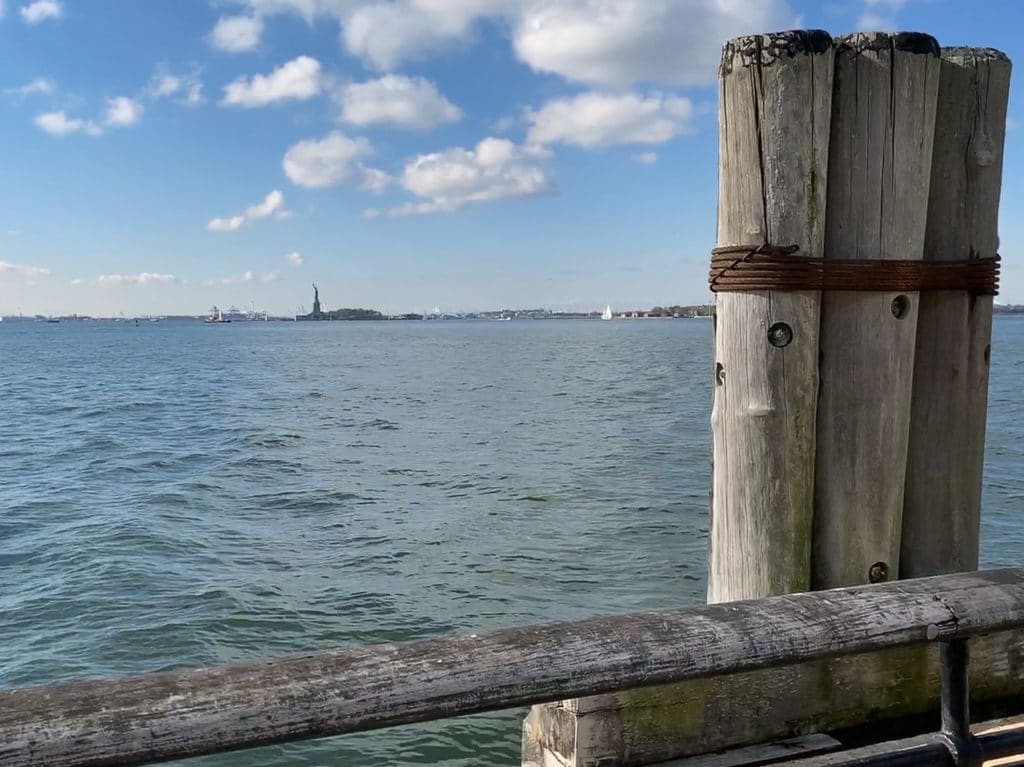
From the Charging Bull it’s a short walk to The Battery, a park at the very southern tip of Manhattan and the departure point for passenger ferries heading to the Statue of Liberty. The Battery is a little oasis with beautiful gardens, views out to the New York Harbor, and plenty of green space. Kids love the SeaGlass Carousel and Playscape, a playground that’s also a learning environment where they can explore various ecology zones. There’s also an amphitheater for live performances.
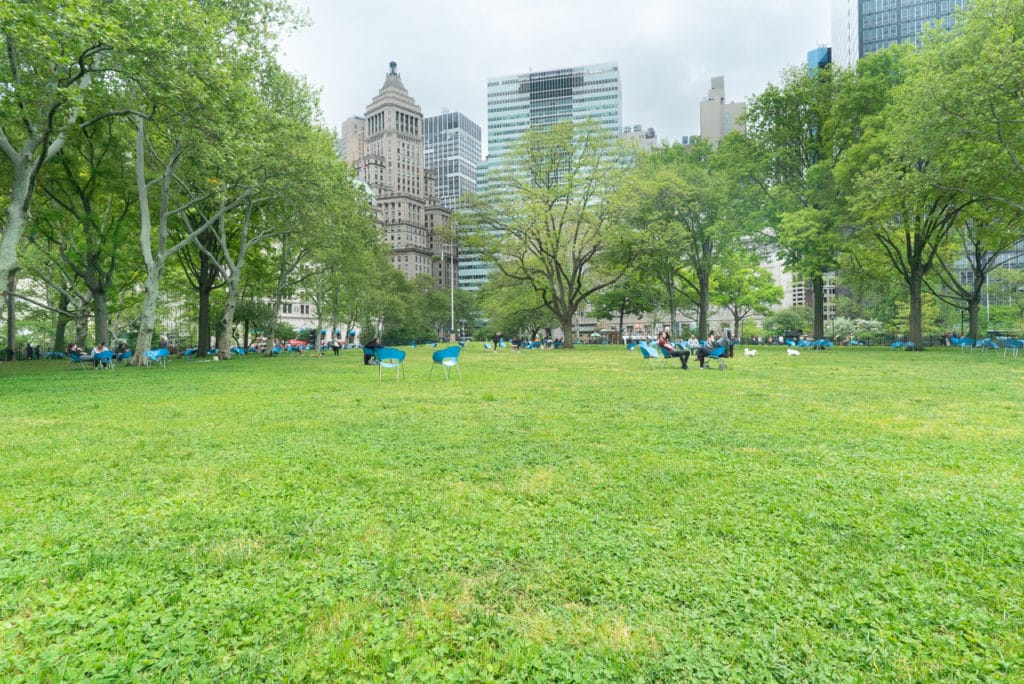
The Battery has a long and storied history. Long before the arrival of the Dutch in the 17th century, people from the Lenape and Munsee tribes hunted and fished here. Recognizing its strategic location on the harbor, the Dutch built a fort and used it as headquarters for the Dutch West India Company.
It’s likely that the 1626 “purchase” of Manhattan (then known as New Amsterdam) happened here, although some say that transaction, led by Peter Minuit, happened uptown in Inwood. The Dutch brought enslaved men, women, and children into New York near here, and by 1711, a slave market was established just a short distance away from what’s now The Battery.
Unless you’re at The Battery for a specific purpose, I recommend going without an agenda and just take in the gardens and harbor views and various attractions. You might want to check out what’s blooming during the month you’re there or follow a designated walking tour with one of these Visitor Guides.
SeaGlass Carousel
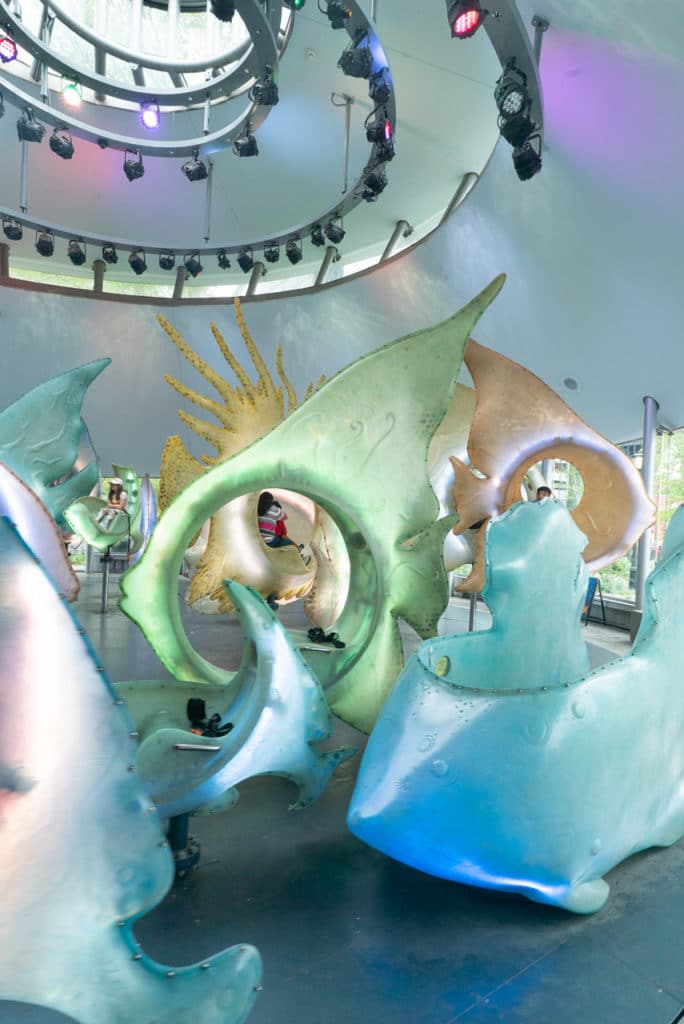
Whether you’re at The Battery with kids or not, have a look at the beautiful SeaGlass Carousel, a lovely ethereal sculpture in motion.
SeaGlass is made up of 30 fiberglass fish and housed inside a pavilion designed to resemble a chambered nautilus. The lightly strobing LED lights, the spinning motion of the fish, and mystical music complete the feeling that you’re in a magical underwater land. SeaGlass Carousel’s aquatic theme is a nod to the New York Aquarium, which was one of the first aquariums in the country when it opened in Castle Garden in 1896.
Open daily 11 a.m.-9 p.m.
Castle Clinton National Monument
The round fortress-type structure that’s now the ticketing office for the Statue of Liberty isn’t much to see but does have an interesting past. It was built between 1808-1811 as a defense against the British. From 1823-1854, the structure now named Castle Garden was an opera house and theater. It was here that Swedish opera singer Jenny Lind made her American debut in 1850. If that sounds familiar, the story of how P.T. Barnum brought her to New York is retold in The Greatest Showman with Hugh Jackman.
In 1855, Castle Garden became an official immigration station, processing millions of arrivals over the next three decades. Notable people who arrived via to New York via this entry point include Nikola Tesla, Harry Houdini, Emma Goldman, and Joseph Pulitzer. Castle Garden shut down as an immigration station in 1890; Ellis Island took over the job in 1892.
In 1896 the building became home to the New York Aquarium, one of the first aquariums in the nation. In 1941, the aquarium moved to Coney Island, where it remains today.
The site was eventually renamed to Castle Clinton National Monument and is now run by the National Park Service.
Open daily 7:45 a.m.-5 p.m.
Fraunces Tavern
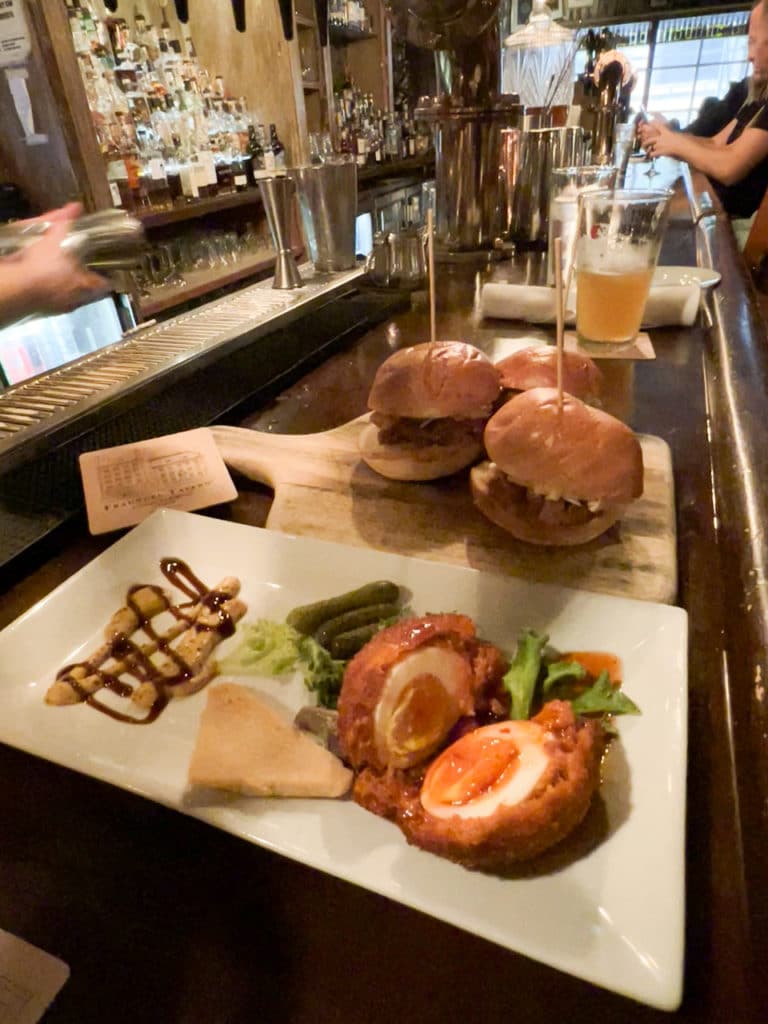

In Lower Manhattan, things to do often entail sights related to colonial history and war history. Nowhere is that more true than Fraunces Tavern. This historical pub was established in 1762 and is a great place to relax after walking from Brooklyn Bridge to the Battery.
Order a cold beer, cocktail, or whiskey flight and then settle back in the same space where George Washington once gathered his troops. The date was December 4, 1783. The American Revolution was won and the British gone for good. Before leaving New York City, Washington assembled his officers at Fraunces Tavern to say goodbye and thank them for their service. You can learn about this and much more pre- and post-colonial history on the second floor of the same building, at the Fraunces Tavern Museum.
The tavern is a sprawling old building, with several passageways leading to different bars. Check out the Independence Bar for craft beers that support independent breweries, or head to the Whiskey Bar to select from over 500 whiskeys. The Hideout Bar is a gin and cocktail bar and at The Piano Bar Upstairs, live music is performed seven days a week. There’s also a dining room serving a full menu for lunch, dinner, and brunch. The menu has several seafood items including oysters and crab cakes. Some dishes have a British air about them, like fish & chips and Scotch Eggs.
Stone Street
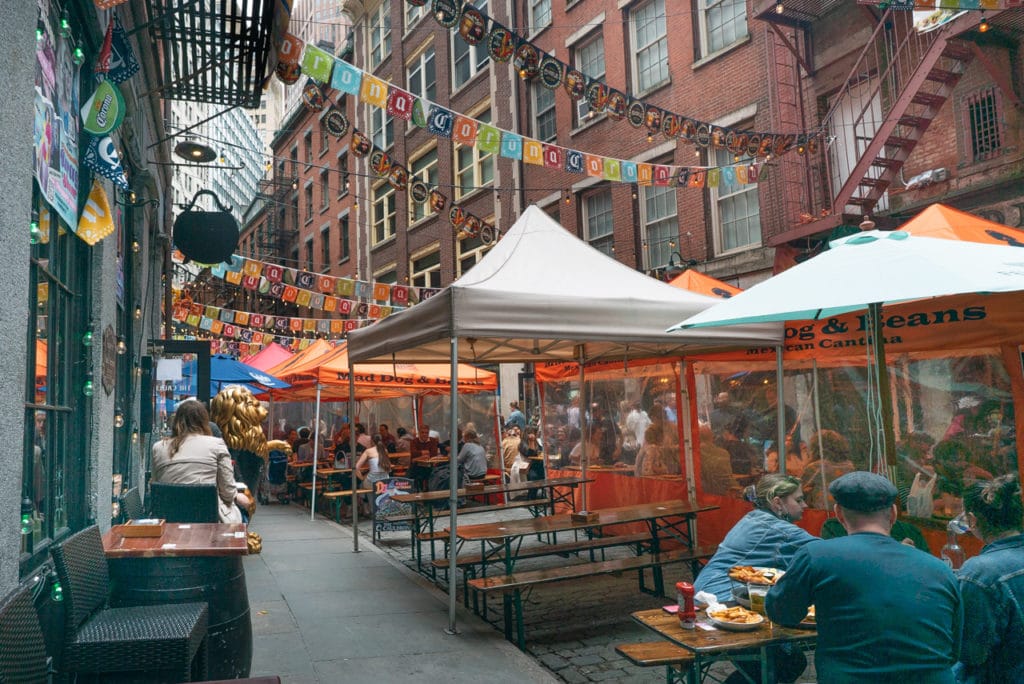
If you really want to dine outdoors, head to the narrow cobblestone lane of Stone Street, a lively block full of restaurants offering casual outdoor dining. Stone Street is one of New York’s oldest streets, becoming the first cobbled street in the colony of New Amsterdam in 1658. Now, the restaurants and seating areas all bump up into each other, creating a fun party-like vibe. Indoor dining is also available.
Some popular restaurants on Stone Street are Stone Street Tavern, Bavaria Beer House, Mad Dog and Beans, and Adrienne’s Pizza Bar.
Like this post? Pin and save for future reference!
